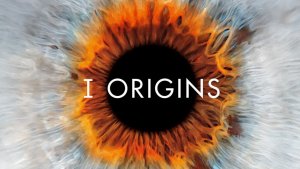I Origins - The Mirror of the Soul


Written and verified by the psychologist Sergio De Dios González
I Origins is an independent film that premiered at the Sundance Film Festival in 2014 and won “Best Film of the Sitges Festival”. It was directed by Mike Cahill and starred Michael Pitt, Brit Marling, and Àstrid Bergès-Frisbey. The film displays a drama with an interesting fictional component, but one that’s surprisingly plausible.
Science and spirituality intermingle throughout the film. This is something that seems very difficult to consolidate, but it perfectly fits together in the end. The plot’s set up is a sort of matryoshka doll, but with the eyes as the main theme. In the beginning, we meet scientist Ian Gray, who’s conducting an investigation that will finally demystify spirituality. From there, one plot will take us to another to finally explain why “the eyes are the mirror of the soul”.
I Origins features the eyes as a starting point
Ian Gray’s obsession with eyes leads him to try to find an origin. That is, a starting point for the evolution of the eye that’ll show that faith has no place in our society. At least that’s his final goal. Ian is obsessed with science, evidence, and data. But, to his surprise, he’ll find love in a rather atypical young woman: Sofi. She’s a foreign spiritual girl that deeply contrasts Ian’s skepticism.
I Origins delves into one of the most debated issues throughout history: science vs. religion. He immerses himself in diverse beliefs and provides a response to reincarnation. Thus, the eyes are the starting point and the discovery that’ll make Ian question everything he knows and everything he learned. However, the film sometimes strays from dialogues that are too surreal and unbelievable in a normal conversation between two people. In any case, there’re not too unlikely if you consider Sofi’s nature.
Perhaps we’re facing a film that’s too predictable. One that seeks to cover a lot in a short amount of time and one that remains on the surface. It may not have a chance to penetrate the heart of the most skeptical but has a good approach, even though it does develop well and makes the plot wrap around us, trapping us. It makes us wonder if reincarnation is possible. We also wonder if our eyes were nothing more than the stamp left from past lives and if other souls once held that same look.
Chance, randomness, and I Origins
For Ian, there’s nothing that science can’t explain. There’s no spiritual world because everything has a scientific explanation easily proven through observations and demonstrations we can extract from the world around us. Randomness and chance have no place in his conception of the world. However, it all changes when he meets Sofi, a young woman he meets through a chance encounter. He hardly knows anything about her and she hasn’t even noticed him.
Ian and Sofi finally meet at a Halloween party, a night closely linked to the spiritual realm, to souls. She’s wearing a costume so he can only see her eyes. They fascinate him and linger in his memory. Then, after losing track of her, Ian tries to find her and a series of coincidences do take him to her. Suddenly, Ian starts noticing that the number 11 appears repeatedly and when he follows its tracks, he finds Sofi.
Why 11, though? Even though the number appears casually and inexplicably in Ian’s life during the film, we know it’s not a random one. This is because the number 11 is traditionally linked to spirituality. 11 is one repeated twice and the sum of its digits gives us 2. This makes us connect it with duality, in two planes, and in two worlds. Similarly, it exceeds the number 10, commonly linked to perfection and to the material world. Thus, the number 11 takes us to a plane beyond, to the spiritual world.
Mysticism and science

Those who subscribe to Pythagoreanism saw a certain numerical correspondence with nature. According to them, reason gave access to nature, to true knowledge and this, in turn, also linked to the mathematical, to numbers. For them, everything departed from number one. And this was a fundamental principle from which everything else sprouted, the apeirón. They believed that the number one has a certain divine nature from which the rest would emerge. This totality expressed in the number 10 and 11 belonged beyond our unworldly plane.
In addition, Pythagoreans had a certain mystical view of the world. Let’s not forget that, more than a school, they were an association of secret and religious character. To them, there was a transmigration of souls. That is, the soul was on a divine plane that didn’t belong to Earth. The soul inhabited the body and would occupy a new body after death. It would repeat the process as many times as it was necessary until it became free.
Soul purification
They had to follow certain rules of behavior to achieve this form of purification or liberation of the soul. Vegetarianism stands out as something strongly linked to their belief in reincarnation, and it also takes place in other religions such as Buddhism. In I Origins, Sofi doesn’t seem to belong to any particular religious dogma but believes in reincarnation. She likes certain Hindu beliefs.
In this way, we see that I Origins not only coincides with the Pythagoreans in the mystical number 11 but also with their statements about reincarnation. Sofi also agrees with the Pythagoreans when it comes to vegetarianism, something that’ll make him question scientific experiments. He begins to raise questions about the unethical animal experiments and the torture of worms, as Ian often does. Be it to prove a theory or just for purely human selfish reasons.
Currently, we seldom hesitate to link Pythagoras and his disciples with mathematics and geometry. In short, we don’t have a problem linking them with rational and scientific knowledge. However, by delving deeper into their philosophy, we realize they had a strong religious component. In I Origins, spirituality and science merge and invite us to reflect on the world around us.
Duality

Plato once explained that there were two worlds. One of them escaped our senses, but was definitely there and gave us access to the truth and freed our souls. Sofi poses an interesting question to Ian during the film as she learns that he experiments with worms that only have two senses. She asks: what would happen if we, like those worms who lack sight, lacked another sense that prevents us from seeing further?
The worms that Ian experiments with can’t see. Therefore, they don’t know what light or colors are. Thus, how can we be sure that we’re not missing another meaning? One that allows us to perceive something that’s right in front of us. A meaning that we just don’t know because we don’t have the ability to access it.
The men Plato described in his allegory of the cave clung just like Ian to their sensitive reality. He also clings to those shadows that look real because they could see them. Nevertheless, they were leaving aside the real-world they rejected because they had no access to it. They rejected it without questioning whether it was real or not. And it seems that everything unknown or inexplicable scares humans. It seems that we want to only cling to what we see, to what comes to us through our senses.
Conclusion
I Origins plays with what we consider rational, with the limits of our own knowledge. It proposes a reality that could be before our eyes and that we simply can’t perceive. The film develops a storyline to finally repeat and exemplify a metaphor we’ve heard a lot throughout our lives: “the eyes are the mirror of the soul”.
I Origins is an independent film that premiered at the Sundance Film Festival in 2014 and won “Best Film of the Sitges Festival”. It was directed by Mike Cahill and starred Michael Pitt, Brit Marling, and Àstrid Bergès-Frisbey. The film displays a drama with an interesting fictional component, but one that’s surprisingly plausible.
Science and spirituality intermingle throughout the film. This is something that seems very difficult to consolidate, but it perfectly fits together in the end. The plot’s set up is a sort of matryoshka doll, but with the eyes as the main theme. In the beginning, we meet scientist Ian Gray, who’s conducting an investigation that will finally demystify spirituality. From there, one plot will take us to another to finally explain why “the eyes are the mirror of the soul”.
I Origins features the eyes as a starting point
Ian Gray’s obsession with eyes leads him to try to find an origin. That is, a starting point for the evolution of the eye that’ll show that faith has no place in our society. At least that’s his final goal. Ian is obsessed with science, evidence, and data. But, to his surprise, he’ll find love in a rather atypical young woman: Sofi. She’s a foreign spiritual girl that deeply contrasts Ian’s skepticism.
I Origins delves into one of the most debated issues throughout history: science vs. religion. He immerses himself in diverse beliefs and provides a response to reincarnation. Thus, the eyes are the starting point and the discovery that’ll make Ian question everything he knows and everything he learned. However, the film sometimes strays from dialogues that are too surreal and unbelievable in a normal conversation between two people. In any case, there’re not too unlikely if you consider Sofi’s nature.
Perhaps we’re facing a film that’s too predictable. One that seeks to cover a lot in a short amount of time and one that remains on the surface. It may not have a chance to penetrate the heart of the most skeptical but has a good approach, even though it does develop well and makes the plot wrap around us, trapping us. It makes us wonder if reincarnation is possible. We also wonder if our eyes were nothing more than the stamp left from past lives and if other souls once held that same look.
Chance, randomness, and I Origins
For Ian, there’s nothing that science can’t explain. There’s no spiritual world because everything has a scientific explanation easily proven through observations and demonstrations we can extract from the world around us. Randomness and chance have no place in his conception of the world. However, it all changes when he meets Sofi, a young woman he meets through a chance encounter. He hardly knows anything about her and she hasn’t even noticed him.
Ian and Sofi finally meet at a Halloween party, a night closely linked to the spiritual realm, to souls. She’s wearing a costume so he can only see her eyes. They fascinate him and linger in his memory. Then, after losing track of her, Ian tries to find her and a series of coincidences do take him to her. Suddenly, Ian starts noticing that the number 11 appears repeatedly and when he follows its tracks, he finds Sofi.
Why 11, though? Even though the number appears casually and inexplicably in Ian’s life during the film, we know it’s not a random one. This is because the number 11 is traditionally linked to spirituality. 11 is one repeated twice and the sum of its digits gives us 2. This makes us connect it with duality, in two planes, and in two worlds. Similarly, it exceeds the number 10, commonly linked to perfection and to the material world. Thus, the number 11 takes us to a plane beyond, to the spiritual world.
Mysticism and science

Those who subscribe to Pythagoreanism saw a certain numerical correspondence with nature. According to them, reason gave access to nature, to true knowledge and this, in turn, also linked to the mathematical, to numbers. For them, everything departed from number one. And this was a fundamental principle from which everything else sprouted, the apeirón. They believed that the number one has a certain divine nature from which the rest would emerge. This totality expressed in the number 10 and 11 belonged beyond our unworldly plane.
In addition, Pythagoreans had a certain mystical view of the world. Let’s not forget that, more than a school, they were an association of secret and religious character. To them, there was a transmigration of souls. That is, the soul was on a divine plane that didn’t belong to Earth. The soul inhabited the body and would occupy a new body after death. It would repeat the process as many times as it was necessary until it became free.
Soul purification
They had to follow certain rules of behavior to achieve this form of purification or liberation of the soul. Vegetarianism stands out as something strongly linked to their belief in reincarnation, and it also takes place in other religions such as Buddhism. In I Origins, Sofi doesn’t seem to belong to any particular religious dogma but believes in reincarnation. She likes certain Hindu beliefs.
In this way, we see that I Origins not only coincides with the Pythagoreans in the mystical number 11 but also with their statements about reincarnation. Sofi also agrees with the Pythagoreans when it comes to vegetarianism, something that’ll make him question scientific experiments. He begins to raise questions about the unethical animal experiments and the torture of worms, as Ian often does. Be it to prove a theory or just for purely human selfish reasons.
Currently, we seldom hesitate to link Pythagoras and his disciples with mathematics and geometry. In short, we don’t have a problem linking them with rational and scientific knowledge. However, by delving deeper into their philosophy, we realize they had a strong religious component. In I Origins, spirituality and science merge and invite us to reflect on the world around us.
Duality

Plato once explained that there were two worlds. One of them escaped our senses, but was definitely there and gave us access to the truth and freed our souls. Sofi poses an interesting question to Ian during the film as she learns that he experiments with worms that only have two senses. She asks: what would happen if we, like those worms who lack sight, lacked another sense that prevents us from seeing further?
The worms that Ian experiments with can’t see. Therefore, they don’t know what light or colors are. Thus, how can we be sure that we’re not missing another meaning? One that allows us to perceive something that’s right in front of us. A meaning that we just don’t know because we don’t have the ability to access it.
The men Plato described in his allegory of the cave clung just like Ian to their sensitive reality. He also clings to those shadows that look real because they could see them. Nevertheless, they were leaving aside the real-world they rejected because they had no access to it. They rejected it without questioning whether it was real or not. And it seems that everything unknown or inexplicable scares humans. It seems that we want to only cling to what we see, to what comes to us through our senses.
Conclusion
I Origins plays with what we consider rational, with the limits of our own knowledge. It proposes a reality that could be before our eyes and that we simply can’t perceive. The film develops a storyline to finally repeat and exemplify a metaphor we’ve heard a lot throughout our lives: “the eyes are the mirror of the soul”.
This text is provided for informational purposes only and does not replace consultation with a professional. If in doubt, consult your specialist.







